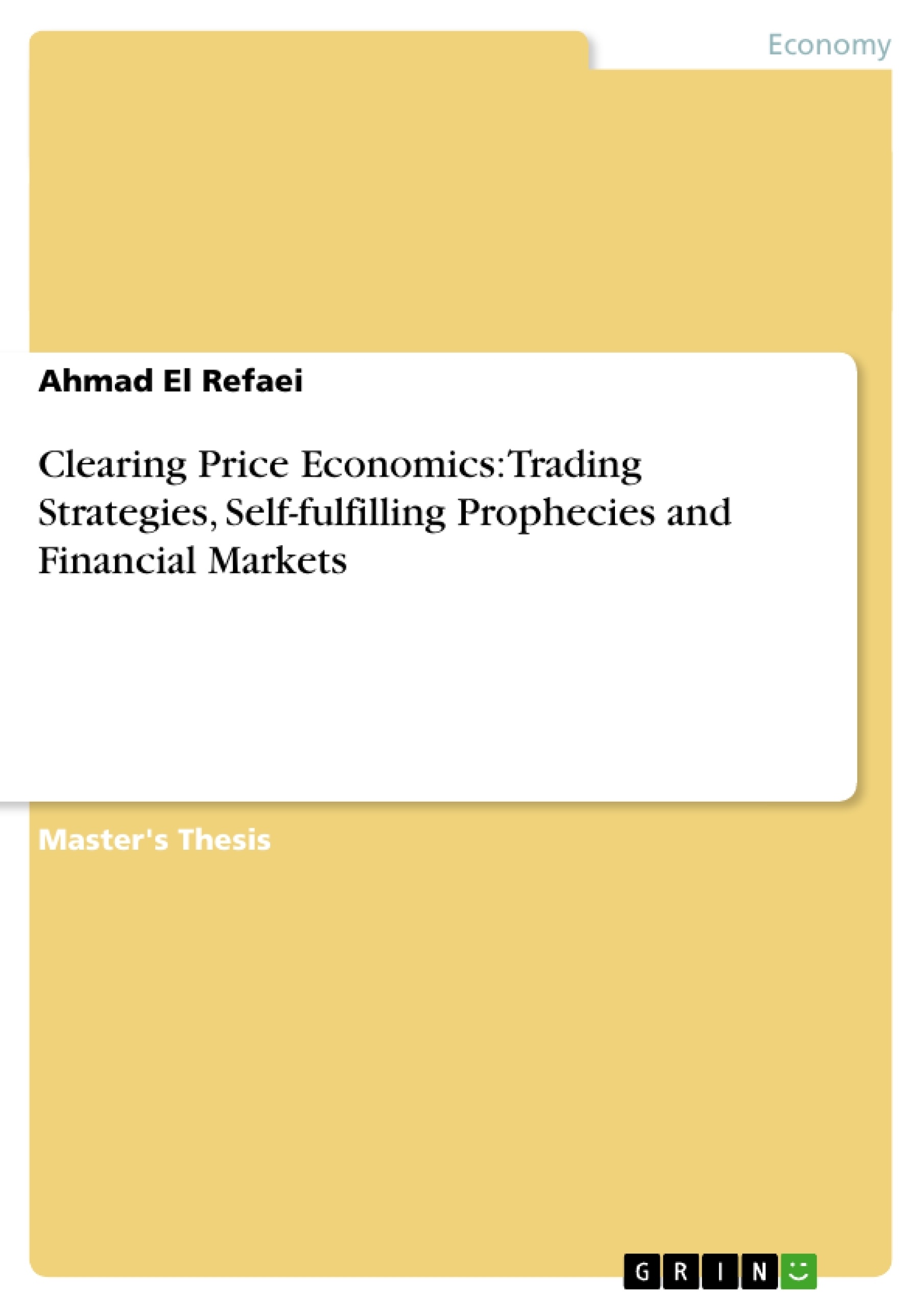This paper starts off by introducing the efficient market hypothesis, and then moves into the main trading strategies that are being use in equity markets. Trading strategies such as fundamental analysis and technical analysis are introduced. Efforts in behavioral finance are then presented to help explain biases that have impact on stock prices. Then, it alters the main focus of the paper towards understanding the function of clearing prices through the aid of price discovery and matching algorithms in stock exchanges. The hypothesis of having clearing prices as a function of the trading strategies being used in a market place given certain conditions is tested. The method used is a theoretical agent-based model. The paper finds preliminary signs of self-fulfilling prophecy as a phenomenon that seems to prevail in equity markets. Finally, it gives recommendations accordingly regarding new areas of research in financial markets.
Inhaltsverzeichnis (Table of Contents)
- Literature Review
- Efficient Market Hypothesis (EMH)
- Rational & Irrational Traders
Zielsetzung und Themenschwerpunkte (Objectives and Key Themes)
This paper investigates the role of clearing prices in financial markets, challenging the conventional Efficient Market Hypothesis (EMH). The study explores the interplay between trading strategies, price discovery, and the potential for self-fulfilling prophecies. The main objectives are to: * Understand how clearing prices are determined in the context of various trading strategies. * Analyze the influence of behavioral biases on price formation and market efficiency. * Explore the concept of self-fulfilling prophecies as a potential driver of price movements. * Examine the limitations of the EMH in explaining market dynamics.Zusammenfassung der Kapitel (Chapter Summaries)
Literature Review
This chapter begins by introducing the Efficient Market Hypothesis (EMH) and its core principles. It discusses the concept of market efficiency, the implications for arbitrage, and the idea that prices reflect all available information. The chapter then explores anomalies in market behavior that challenge the EMH, including overreaction and under-reaction to economic signals, and the impact of irrational behavior on price discovery.Efficient Market Hypothesis (EMH)
This section delves deeper into the EMH, examining its three propositions: rational behavior, random errors, and arbitrage opportunities. The chapter provides evidence that contradicts the EMH, highlighting the role of irrational behavior in driving price movements. A notable example is the Dot-com bubble, which is explained through the concept of feedback dynamics and self-fulfilling prophecies.Rational & Irrational Traders
This section addresses the debate surrounding rational and irrational behavior in financial markets. The author argues that a clear distinction needs to be made between these concepts, proposing that any trader with a consistent basis for taking positions and whose behavior can be modeled should be considered rational. Two types of rational behavior are identified: direct and indirect. Direct rational behavior includes strategies like fundamental and technical analysis, while indirect rational behavior involves following analysts' recommendations.Schlüsselwörter (Keywords)
This paper focuses on clearing prices, trading strategies, self-fulfilling prophecies, and the efficient market hypothesis (EMH). Key concepts include fundamental analysis, technical analysis, behavioral finance, price discovery, and market anomalies. The research utilizes an agent-based model to explore the impact of trading strategies on clearing prices.- Quote paper
- Ahmad El Refaei (Author), 2013, Clearing Price Economics: Trading Strategies, Self-fulfilling Prophecies and Financial Markets, Munich, GRIN Verlag, https://www.grin.com/document/268924



